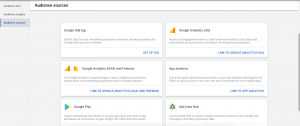 Saying hello is easy.
Saying hello is easy.
A new subscriber comes on board, is highly engaged with your emails, and as a result is boosting your deliverability rating.
Over the customers’ lifecycle, the enthusiasm to open every email wanes and engagement rates dip. You send out a thoughtful and creative reengagement campaign, and then you follow up with a winback campaign to the remaining non-responders.
In the end, you’re left with a whittled-down list of inactive subscribers, and a burning question: Now what?!
Do you keep these inactive subscribers on your list and resume normal operations, stop sending to them completely, or move them to a lower cadence?
Engagement Matters!
It may seem like a no-brainer to keep them on your list and hope they will rekindle that old flame, but the major internet service providers (ISPs) are placing more emphasis on engagement than ever before.
In addition to spam traps, blacklists, and authentication, you also have to consider how your subscribers’ interaction with your emails impacts your deliverability rating.
Positive and negative subscriber engagement are becoming important elements in deliverability ratings.
Positive influences, such as opening or replying to an email, moving an email to a folder, marking it as “not spam/junk”, or adding you to their address book all help boost your deliverability rating.
Negative actions, such as deleting a message without opening it or moving it to the spam/junk folder, hurt your reputation which in turn affects your ability to reach engaged subscribers.
When it comes to email deliverability, knowing when to say goodbye to inactive subscribers could make a big difference.
Saying Goodbye
Most experts recommend removing inactive subscribers immediately because they are dragging down your key performance indicators and hurting your deliverability, but moving them to a reduced cadence is a topic of growing debate.
At a panel discussion between the Big 4 ISPs (AOL, Comcast, Gmail, and Outlook.com) at the closing session of the 2015 Email Evolution Conference, Gmail recommended ramping down the cadence for unengaged subscribers for several months before stopping altogether.
Whether you follow the ramp-down approach or choose to quit cold turkey, keeping a healthy ratio of engage to unengaged subscribers is important to your deliverability.
The positive actions of subscribers counteract the negative ones, so keeping good list hygiene will benefit you if something unexpected happens to cause bulking with one of your messages.
Not only are inactive subscribers less likely to mark your message as “not spam”—an important factor in getting your reputation back, but they might have been the source of the complaints to begin with.
We know it’s hard to say goodbye to inactive subscribers, but when we dropped 60 percent of our subscribers our engagement rates skyrocket and our deliverability rate followed.
Saying goodbye doesn’t mean you have to unsubscribe the inactive segment; you could just move them to a dormant list and suppress them from your regular sends.
No matter what you choose, your good list hygiene—along with sending the type of emails your subscribers want and placing your unsubscribe link where it’s easy to find (remember, unsubscribes hurt less than the spam folder)—gives you an engaged list that will help boost your deliverability rating.
(211)







